Current Affairs December 2016 - Technology
News 1 - ISRO to launch 83 satellites in one go in 2017
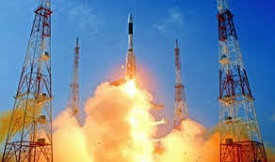
The Indian Space Research Organisation (ISRO) will launch 83 satellites in one go in January 2017. 80 of these satellites will be foreign, weighing 500 kgs and belonging to Israel, Kazakhstan, Netherlands, Switzerland and the U.S.
The foreign satellites are being launched as part of the commercial arrangement between them and Antrix Corporation Ltd. The three Indian satellites that are going to be launched are - i) Cartosat – 2 series, ii) INS-IA and iii) INS-1B.
News 2 - Nihonium becomes Asia's 1st Periodic Table element discovery
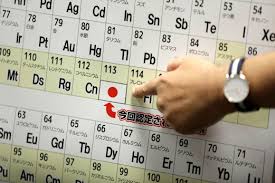
Japanese scientists who discovered the 113th element of the periodic table have dubbed it "Nihonium" after the Japanese-language name for their country.
It is the first atomic element found in Asia and, the first found outside Europe or the United States. Element 113 was first found in 2004. It does not exist naturally and has had to be synthesized. The other atomic elements endorsed by International Union of Pure and Applied Chemistry are Moscovium (115), Tennessine (117) and Oganesson (118).
News 3 - Scientists discover hot hydrogen atoms in Earth's upper atmosphere

Researchers of University of Illinois have discovered the existence of hot atomic hydrogen (H) atoms in thermosphere, an upper layer of Earth’s atmosphere. It was published in the report titled Nature Communications. The presence of H atoms in the thermosphere significantly affects the distribution of the H atoms throughout the entire atmosphere.
The discovery was enabled by the development of new numerical techniques and their application to years' worth of remote sensing measurements acquired by NASA's Thermosphere Ionosphere Mesosphere Energetics and Dynamics (TIMED) satellite.
News 4 - ISRO launches PSLV-C36 carrying a remote sensing satellite
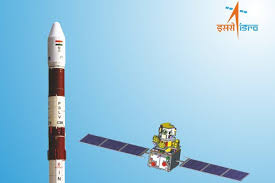
The Indian Space Research Organisation (ISRO) launched its PSLV C36 Resourcesat-2A from the Satish Dhawan Space Centre in Sriharikota. The launch completes the fourth stage (PS4) of the PSLV-C36, the 38th flight of the launch vehicle.
The 1,235-kg remote sensing satellite was placed into an 817-km polar Sun Synchronous Orbit (SSO) and is intended for continuing the resource monitoring data services to global users. The spacecraft has a mission life of five years.
News 5 - Japan launched Kounotori 6 cargo spaceship to ISS
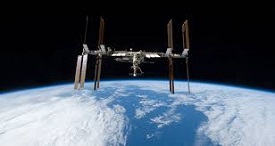
Japan has successfully launched a robotic spacecraft, Kounotori 6, to deliver supplies for astronauts living in the International Space Station (ISS). The unmanned H-II Transfer Vehicle 6 (HTV-6) was launched from southern Japan's Tanegashima Space Center atop an H-IIB rocket.
HTV-6 is packed with more than 4.5 tons (4.1 metric tons) of supplies, spare parts, scientific equipment and water for the astronauts aboard the orbiting lab. The first mission of the HTV, or Kounotori 1, was launched in 2009.
News 6 - Scientists create Nanoceramic material for safer nuclear reactors
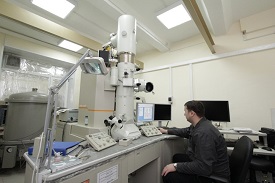
Scientists have created a nanoceramic material that can be used in next-generation nuclear reactors. It will operate at higher temperatures and radiation fields, thus, producing energy more efficiently and economically. Moreover, it also becomes tougher under radiation.
The new material is made of aluminum oxide nanoceramic coating. The team included Fabio Di Fonzo and Kumar Sridharan and others. Water is the traditional coolant used in for absorbing the heat released from fission reactions.
News 7 - ISRO inked contract for first privately built satellite by 2017
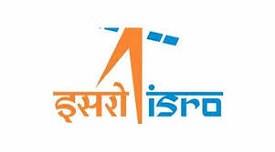
The Indian Space Research Organisation entered contract with six companies to have India’s first industry-built spacecraft by 2017. It was signed between M. Annadurai, Director of ISRO Satellite Centre (ISAC), and the consortium lead, Alpha Design Technologies P Ltd.
Contract involves assembly, integration and testing of two spare navigation satellites consecutively in around 18 months. Alpha is a defence manufacturing contractor that already supply components to ISRO. This is the first time that ISRO has outsourced an entire satellite to industry.
News 8 - NASA inked $127 million contract with California’s Space systems

California’s Space Systems has been given contract of worth $127mn by National Aeronautics and Space Administration for giving shape to its robotic spacecraft ‘RestoreL Spacecraft’ equipped with the tools, technologies and techniques needed to service satellites like refuel or repair, currently in orbit.
Three-year core period and a two-year indefinite-delivery contract will provide spacecraft bus, critical hardware to spacecraft related services to accomplish mission integration, test, launch and operations. RestoreL's capabilities will provide facility to satellite operators so that they have ways to manage their fleets.
News 9 - NASA launched 8 mini-satellites for hurricane forecasting
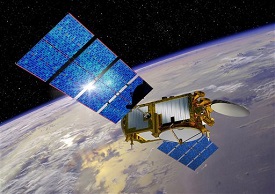
NASA has successfully launched eight spacecraft of its latest Earth science mission, Cyclone Global Navigation Satellite System (CYGNSS), that will provide scientists with advanced technology to see inside tropical storms and hurricanes.
CYGNSS was launched into orbit aboard an Orbital ATK air-launched Pegasus XL launch vehicle. The CYGNSS constellation will make frequent and accurate measurements of ocean surface winds in and near a hurricane’s inner core. CYGNSS is the first orbital mission competitively selected by NASA’s Earth Venture program.
News 10 - China opens its first fully-owned satellite ground station near the North Pole
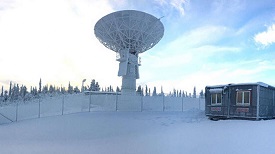
China has launched its first fully-owned overseas satellite ground station near the North Pole. The China Remote Sensing Satellite North Polar Ground Station is located in Sweden about 200km north of the Arctic Circle.
China already has four domestic ground stations. Domestic stations can receive a signal from each satellite five times a day when it passes overhead, while the new station can receive signals up to 12 times a day. In addition, the new station can acquire satellite data in any part of the world within two hours.
News 11 - China has cloned the world’s first such Goat that gives superfine wool

Experts from agricultural universities of North China’s Inner Mongolia Region cloned world’s first cloned goat bearing superfine wool. The goat will be raised in a base of southwest China’s Yunnan Province and Inner Mongolia.
Cashmere wool is obtained from Cashmere goats. The Cashmere fiber from the goat is less than 13.8 micrometers thick, much finer than the average of 15.8 micrometers grown by the famous Erlang Mountain goats in Inner Mongolia.
News 12 - Harvard researchers create the world’s smallest radio receiver
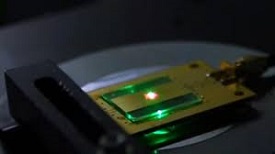
Researchers from the Harvard John A. Paulson School of Engineering and Applied Sciences (SEAS) have made the world’s smallest radio receiver. It is made out of an assembly of atomic-scale defects in pink diamonds.
The building blocks of the radio are that of a size of two atoms. It is biocompatible. The radio uses tiny imperfections in diamonds called nitrogen-vacancy (NV) centers. NV centers can be used to emit single photons or detect very weak magnetic fields.
News 13 - China commissions its first 7-tonne civil helicopter

China has commissioned its first seven-tonne helicopter. It can be used in fields including offshore transportation, search and rescue, law enforcement, general transport and medical assistance.
The AC352 civil helicopter is a multi-purpose twin-engine helicopter with a 7.5-tonne maximum take-off weight, and can carry up to 16 passengers. The new helicopters are expected to be delivered to clients in 2018. The chief designer of the AC352 is Lu Weijian.
News 14 - Flock launched world’s first chat Operating System

Flock launched world’s first chat operating system “FlockOS” which allows developers to build customized apps, bots and integrations on Flock. Flock is a team messenger for businesses.
The developers can either use the customized apps within their organizations or publish it on Flock’s App Store, making them available for all Flock users. This OS provides setup slash commands, providing an additional option for users to interact with the app.
News 15 - Scientists develop first Chikungunya Vaccine
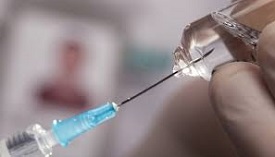
Researchers from The University of Texas Medical Branch at Galveston have developed the first vaccine for chikungunya fever. It is made from an insect-specific Eilat virus. Its single dose can produce neutralizing antibodies that lasted for more than 290 days.
The vaccine is safe and effective. The newly developed vaccine quickly produces a strong immune defense. Chikungunya is a mosquitoborne virus that causes a disease characterized by fever and severe joint pain.
News 16 - Japan launched solid fuel Epsilon-2 rocket
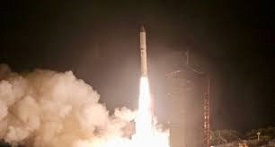
Japan Aerospace Exploration Agency's Epsilon2 rocket carrying the satellite called as Exploration of Energization and Radiation in Geospace (ERG) was successfully launched from the Uchinoura Space Center in southern Japan, to put communication and weather satellites in space.
The Epsilon-2 is a 26-meter-long three-stage new generation solid propellant rocket with least possible launch cost. Exploration of energization and Radiation in Geospace (ERG) is a satellite for studying radiation belts around the earth.
News 17 - China launched CO2 monitoring TanSat satellite
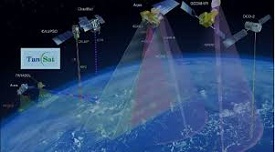
China launched a carbon dioxide monitoring satellite via a Long March-2D rocket called as TanSat satellite. China became the third country after Japan and the United States to monitor greenhouse gases through its own satellite.
TanSat is a 620-kg satellite, sent into the synchronous orbit about 700 kilometers above the earth to analyze global CO2 levels every 16 days, accurate to at least 4 ppm and examine the concentration, distribution and flow of carbon dioxide (CO2) in the atmosphere.
News 18 - ISRO to deploy five communication satellites in 2017
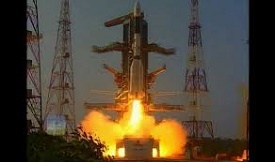
Indian Space Researach Organisation (ISRO) will be deploying five communication satellites in 2017 to meet the urgent transponder requirements of the country.
The next communication satellite would be GSAT17 which would have 48 transponders and this would be followed by a SAARC satellite with 12 transponders. ISRO is also planning next generation communication satellites which would have increased number of beams, up to 32 beams. The next cluster of satellites in a single lift off would be taking place towards the end of January 2017.
News 19 - First functional pacemaker developed from human stem cells
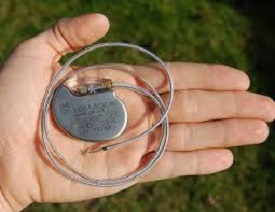
Canadian scientists at the McEwen Centre for Regenerative Medicine have developed the first functional biological pacemaker cells from human pluripotent stem cells. Sinoatrial node cardiomyocytes were grown from induced pluripotent stem cells (iPS cells) per 21 days.
It can regulate heart beats with electrical impulses, paving the way for alternate, biological pacemaker therapy. These human pacemaker cells were tested in rat hearts. Currently the disruption in the heartbeat is usually treated by an electronic pacemaker implantation.



